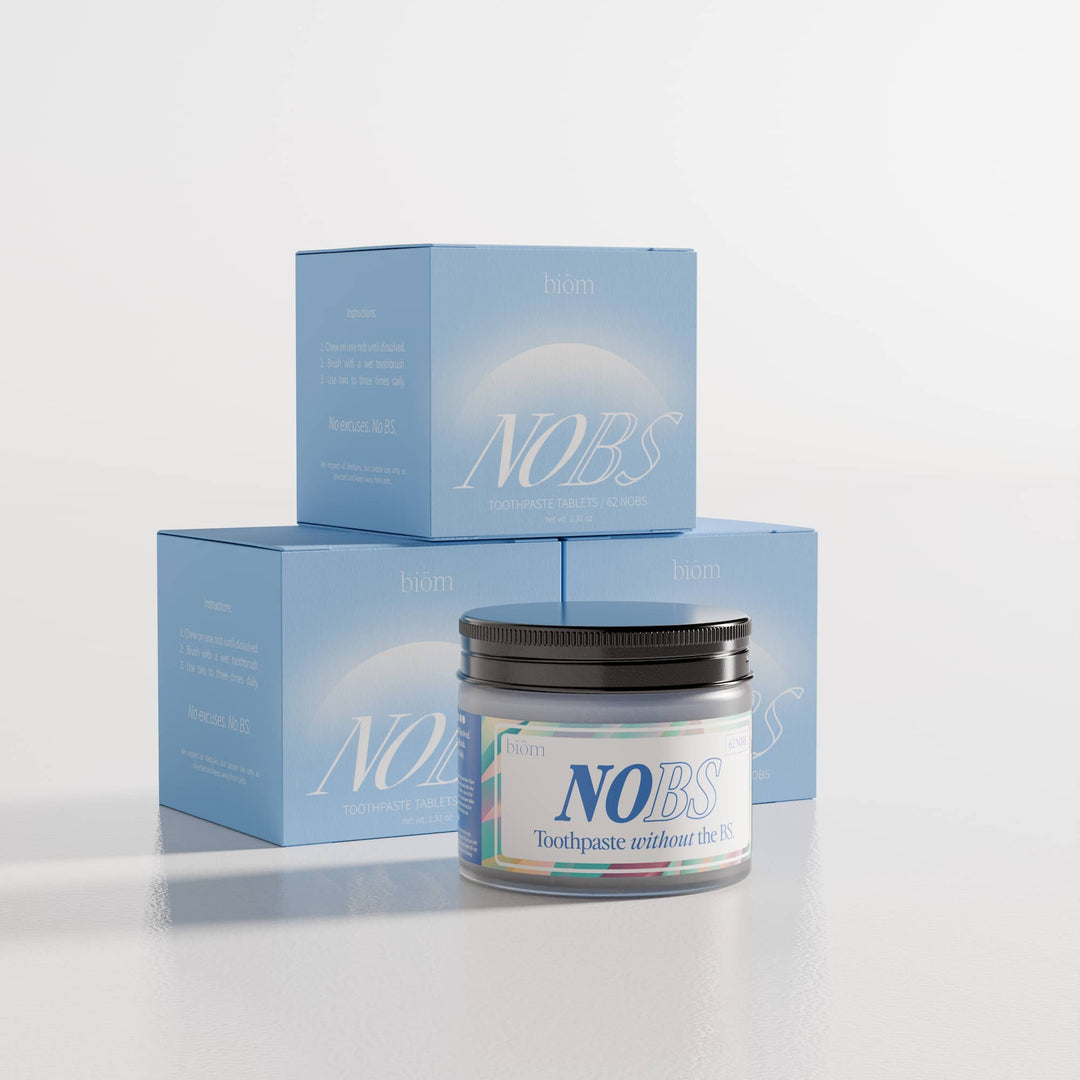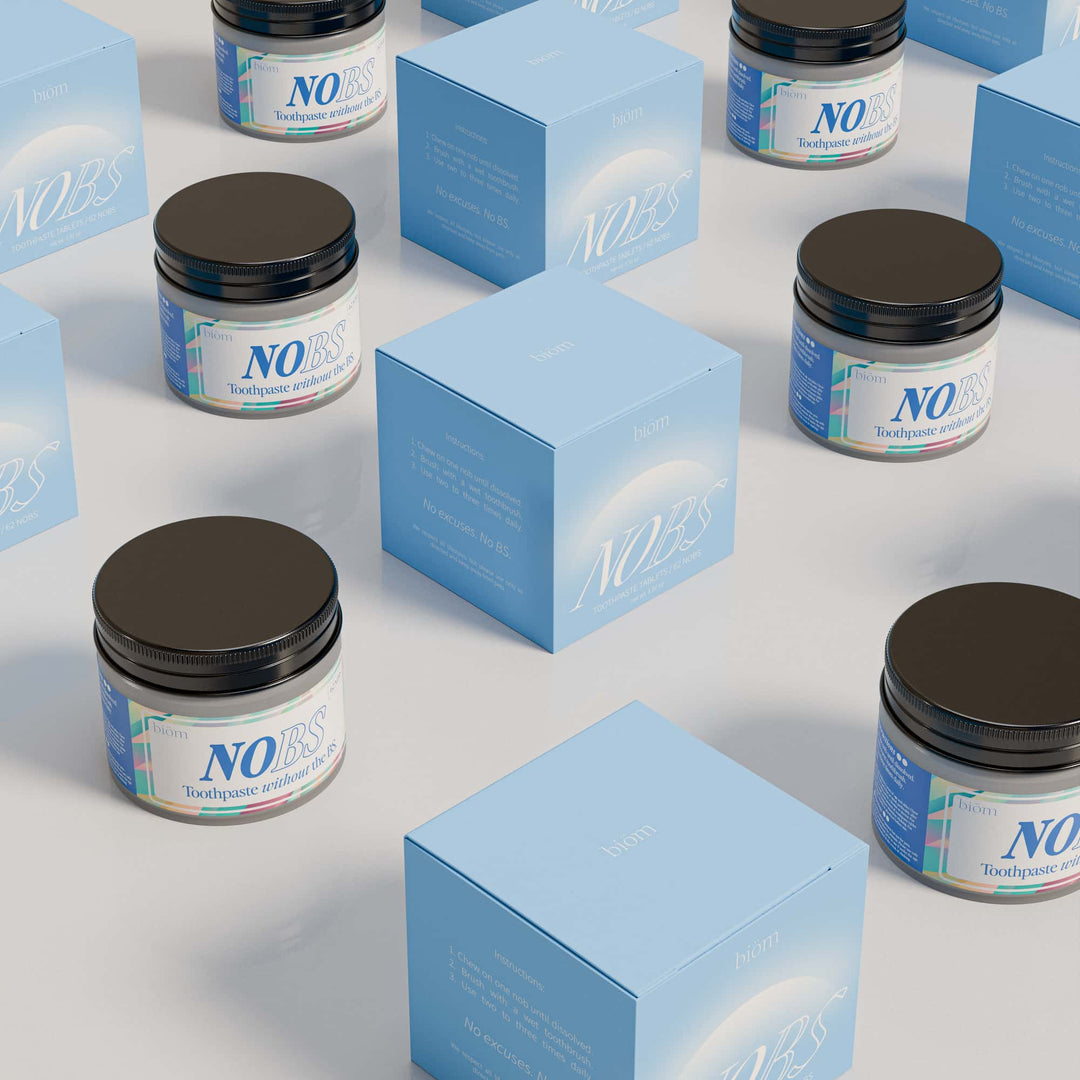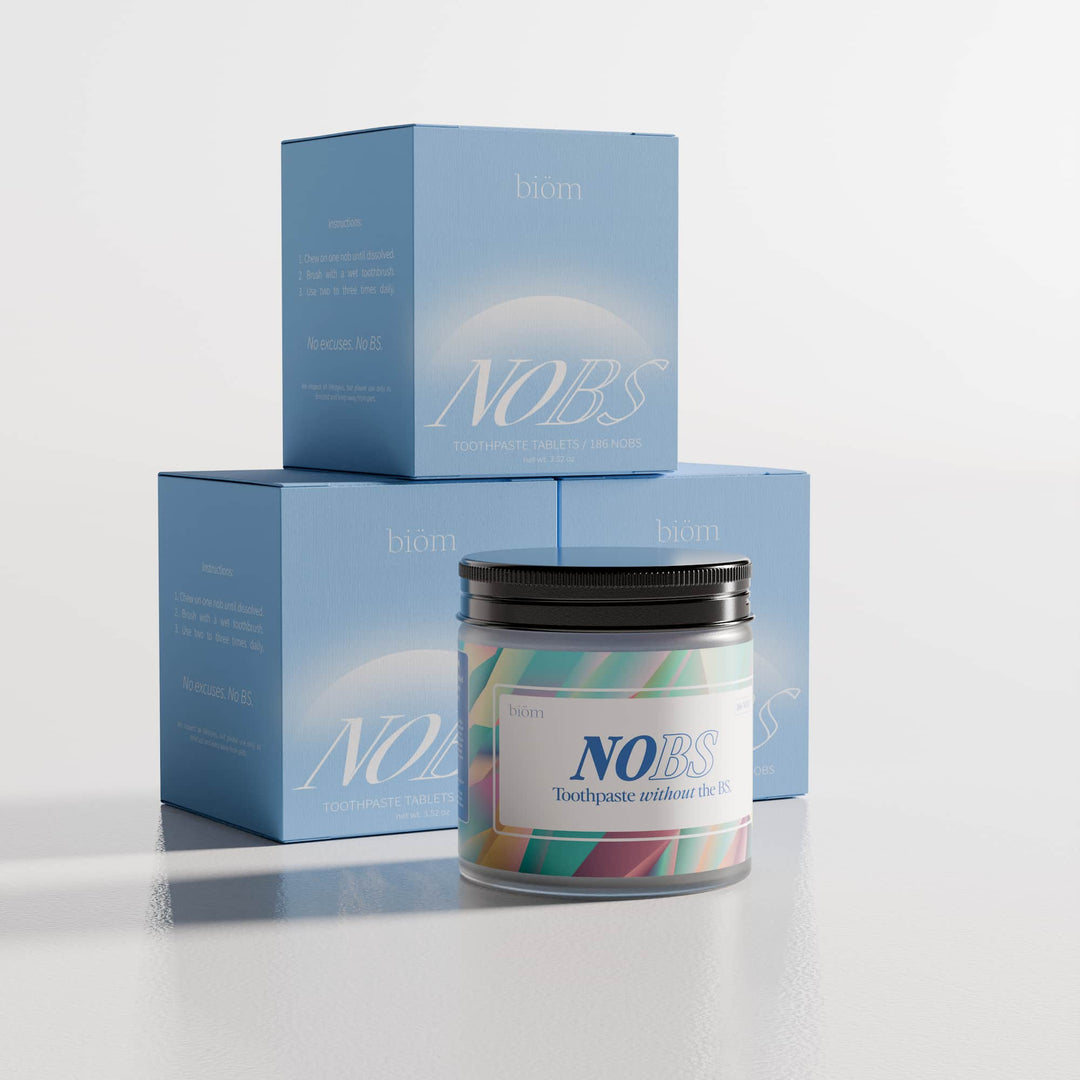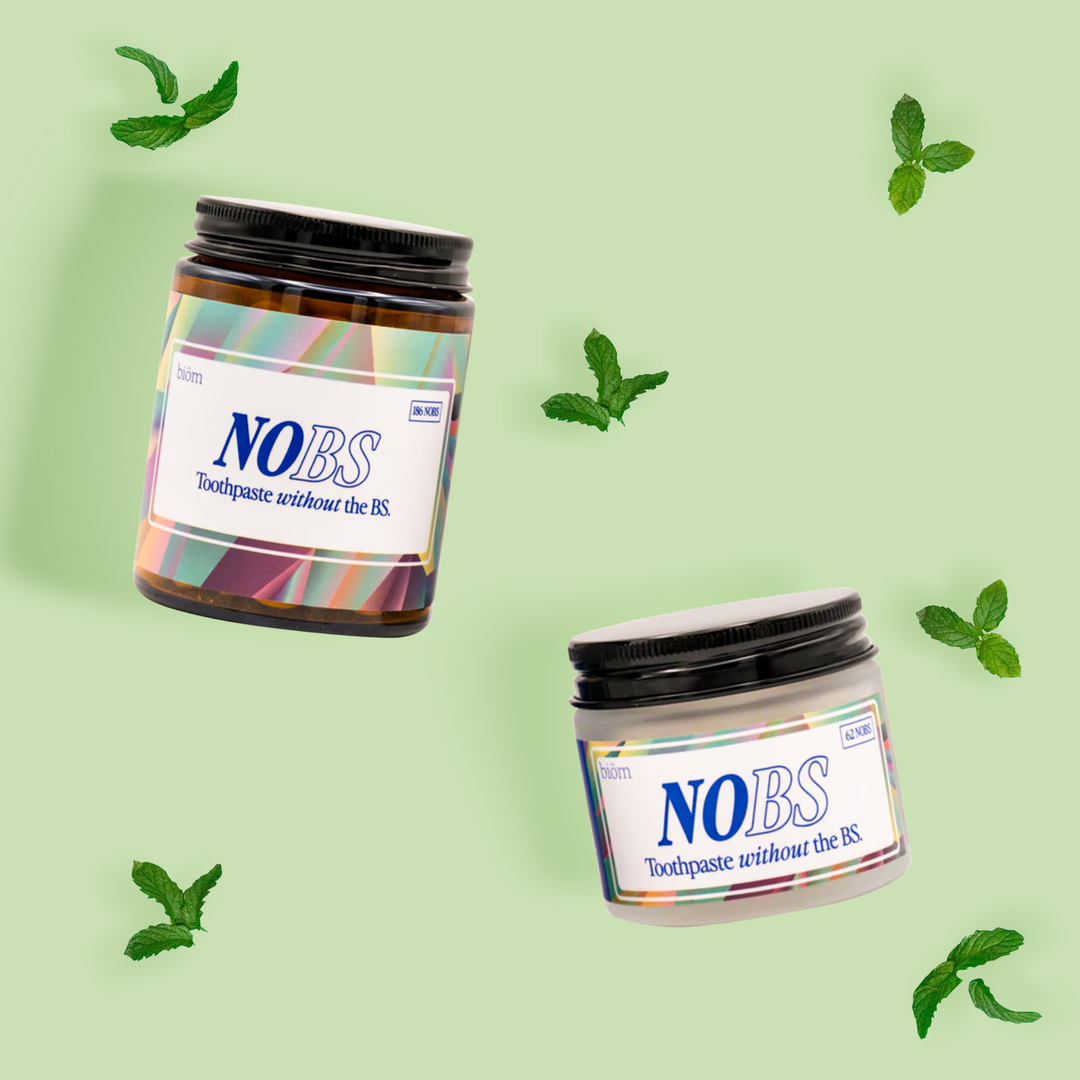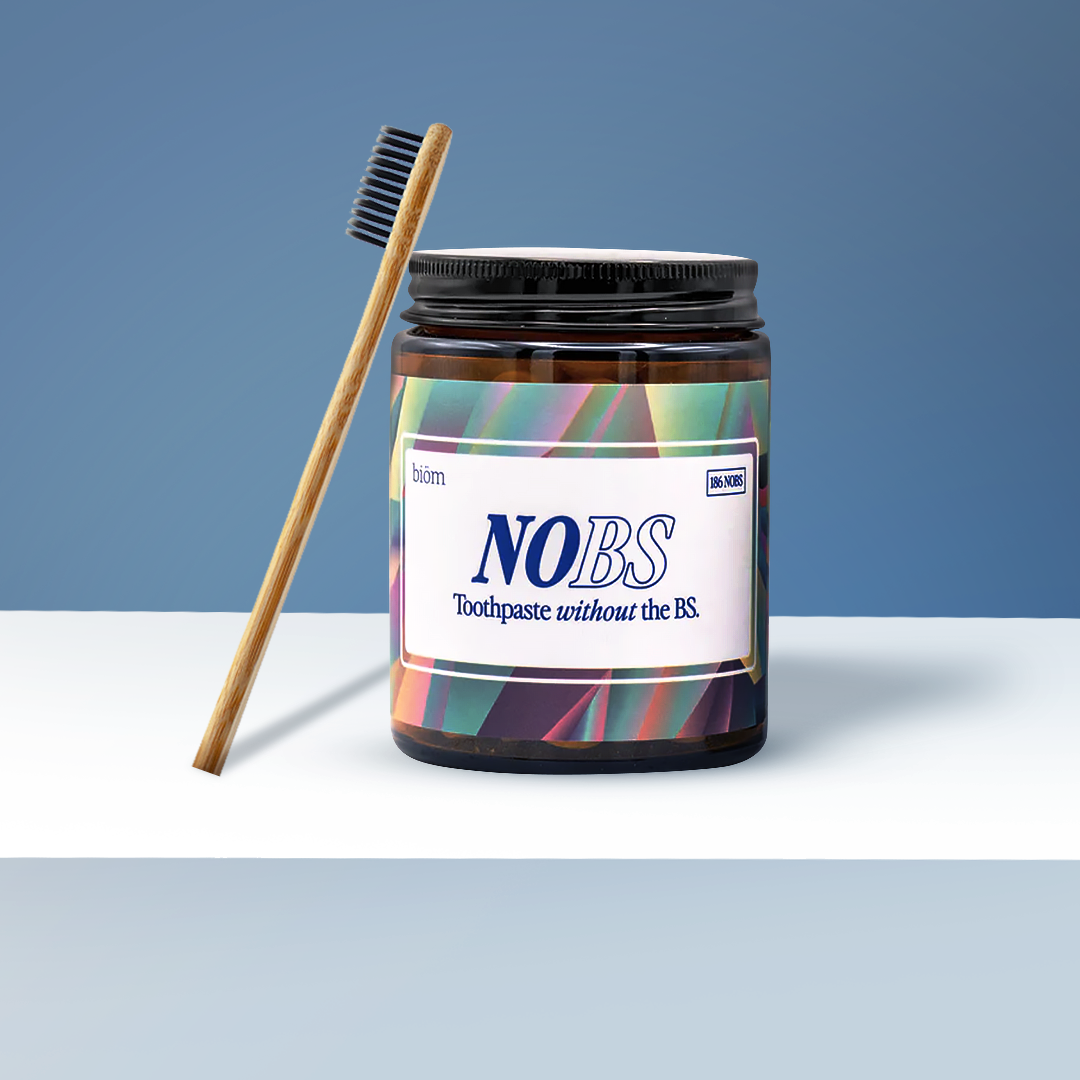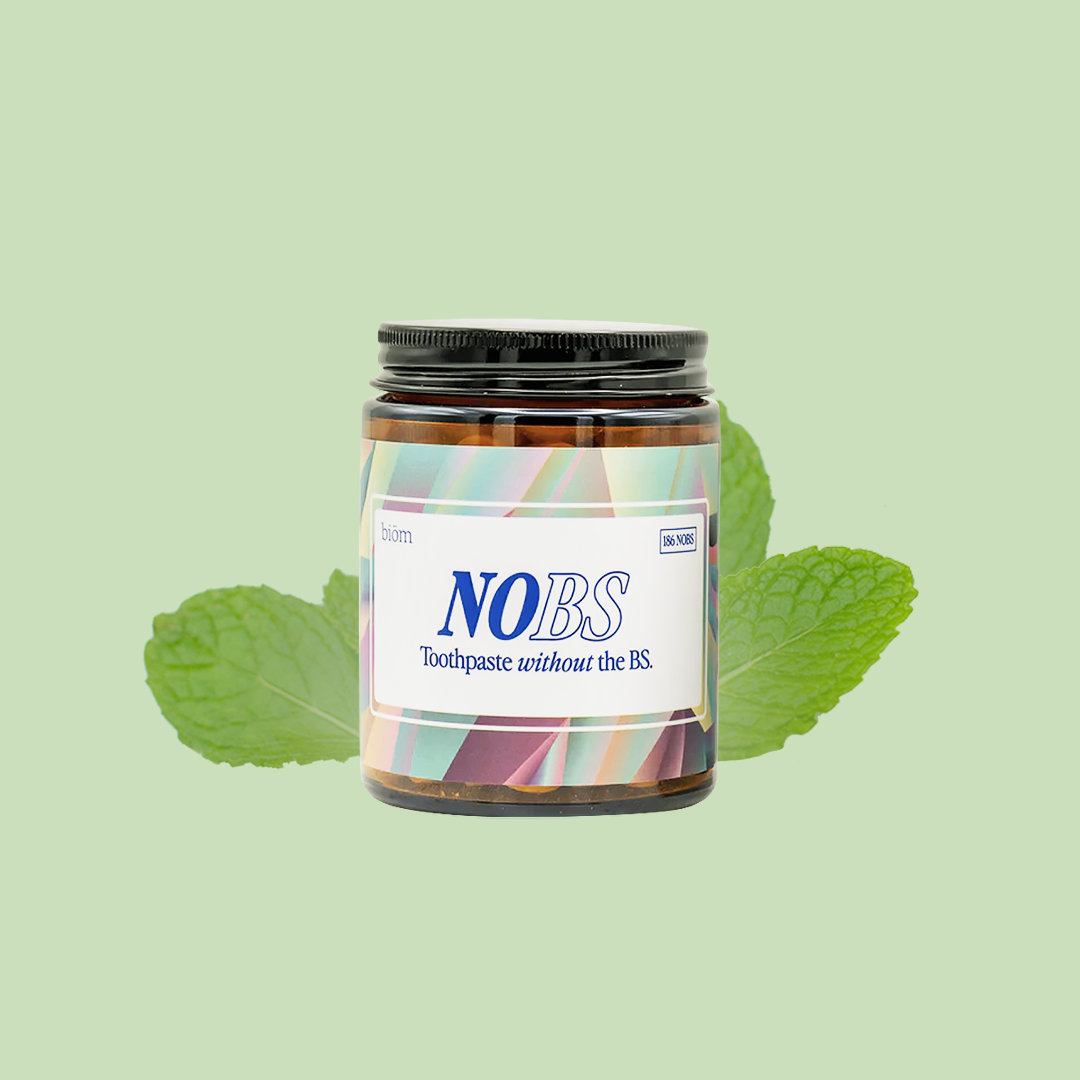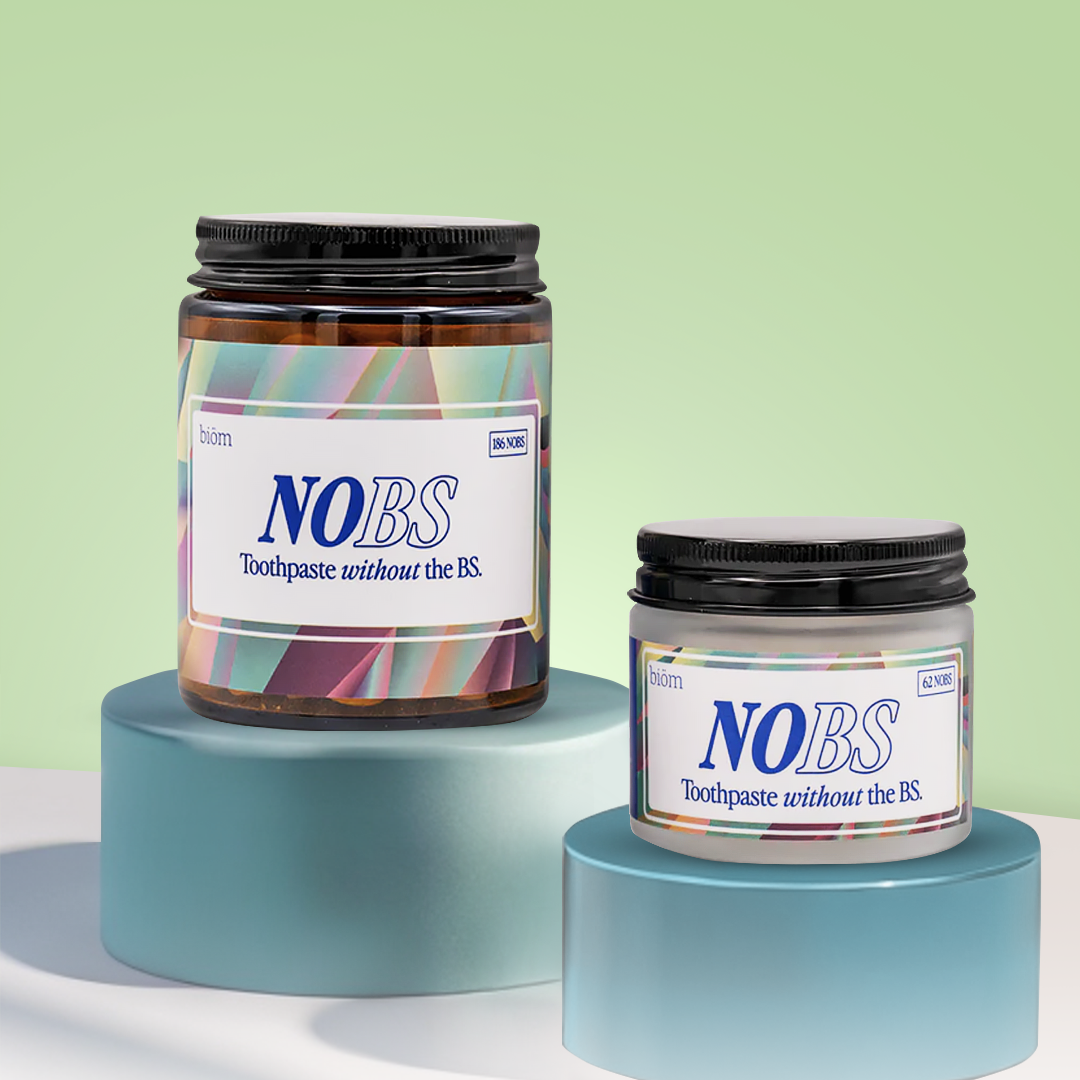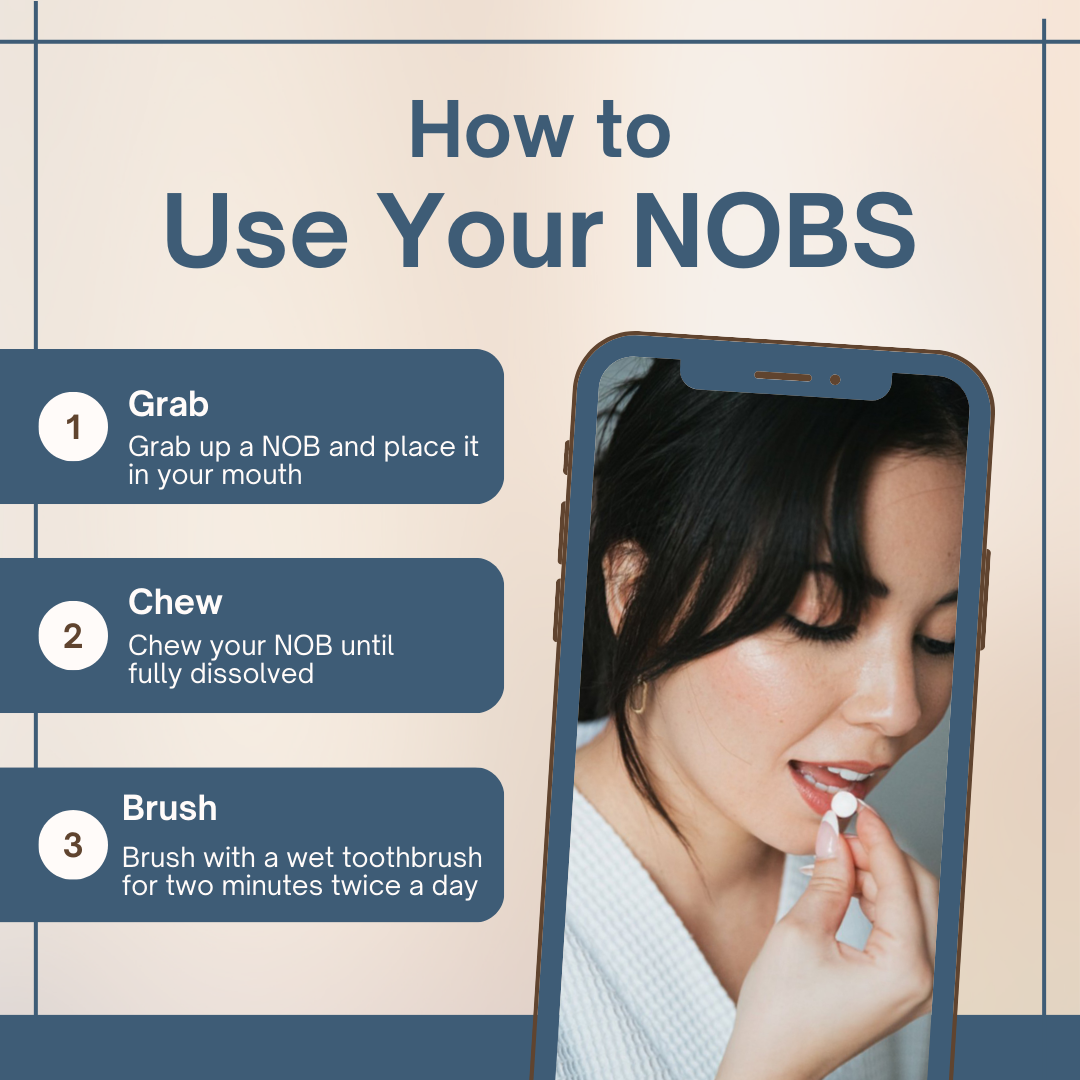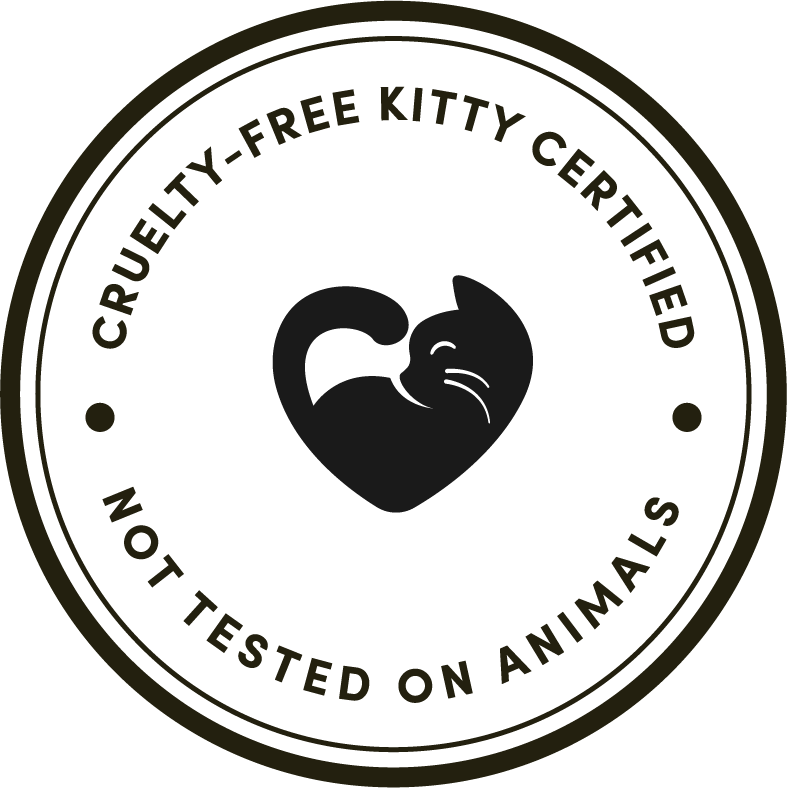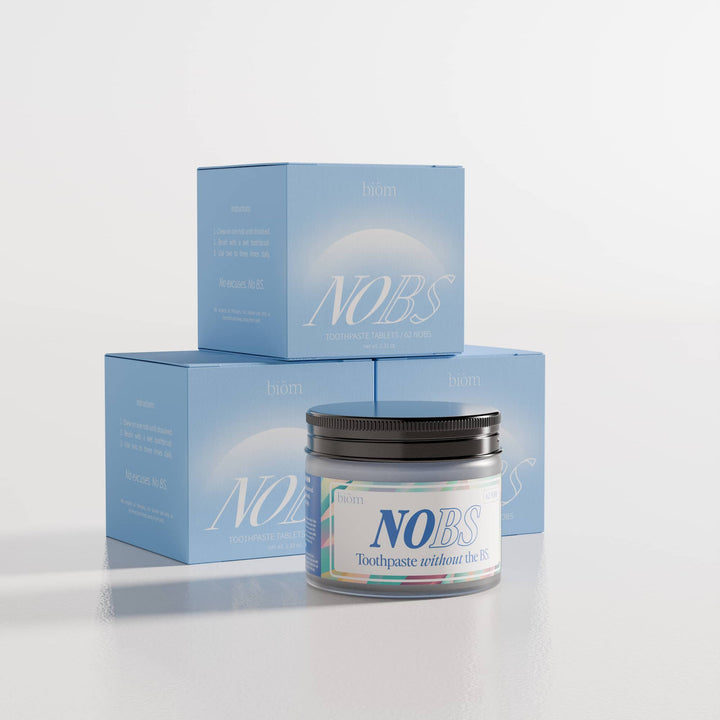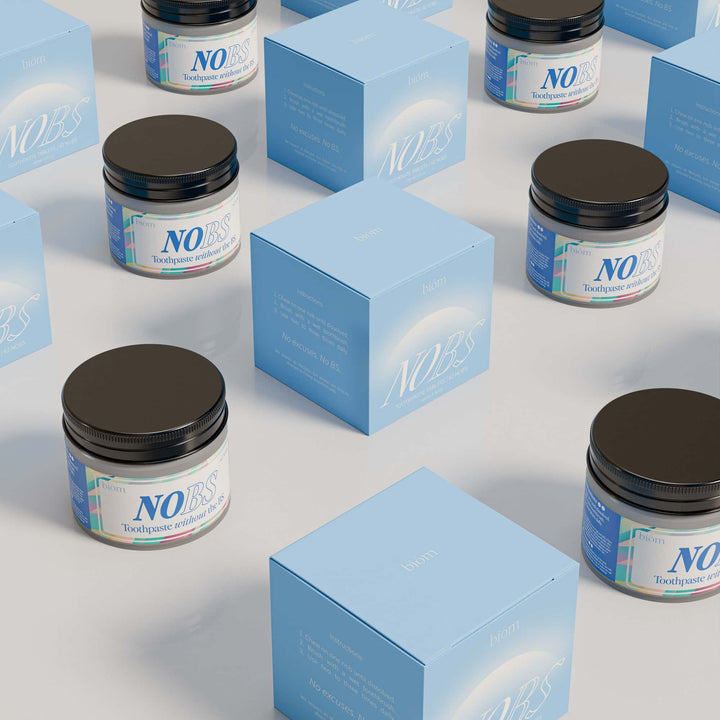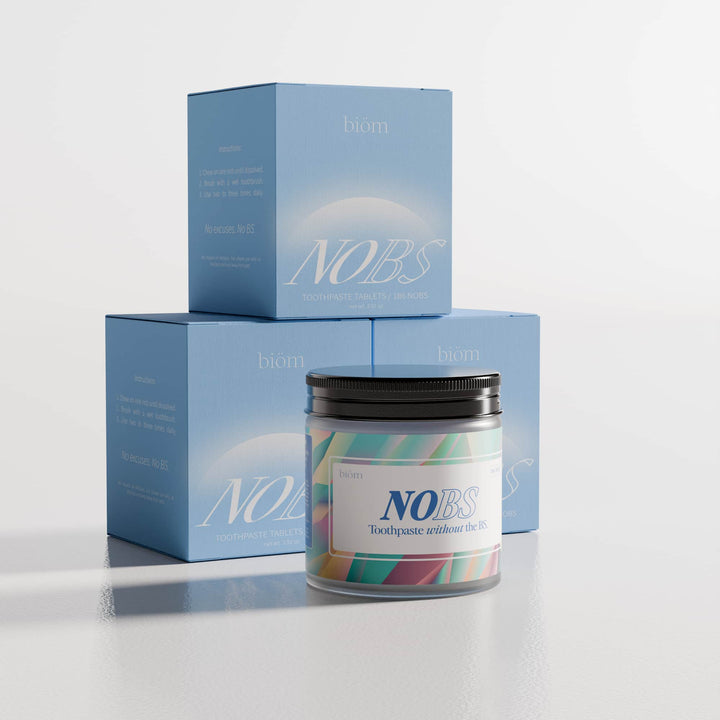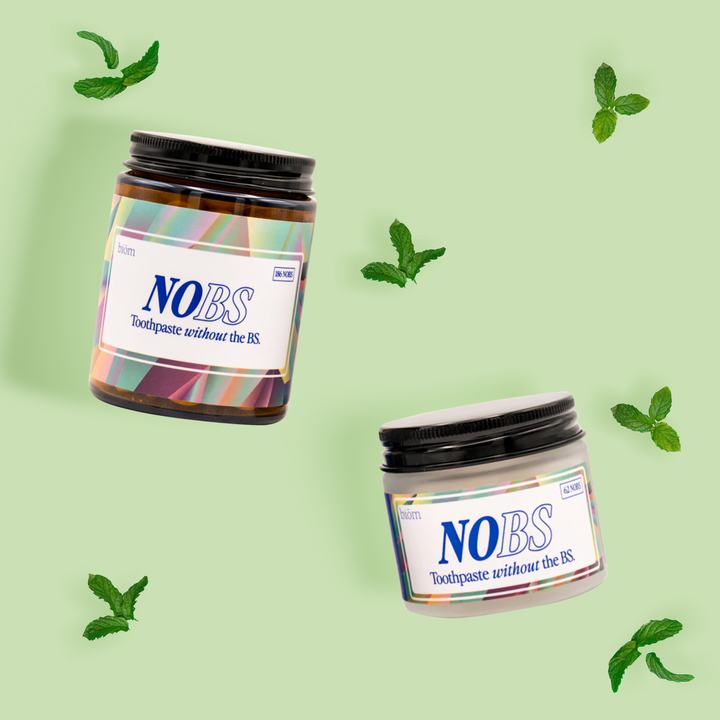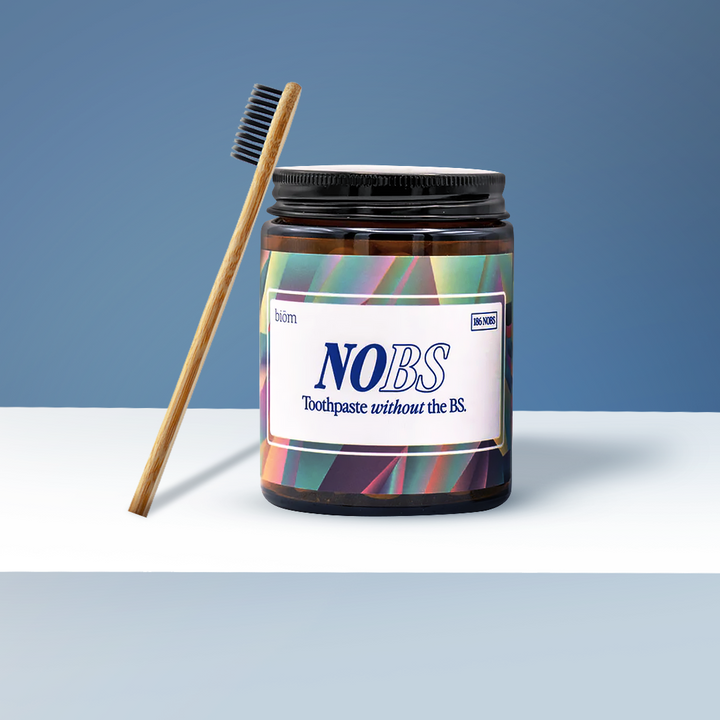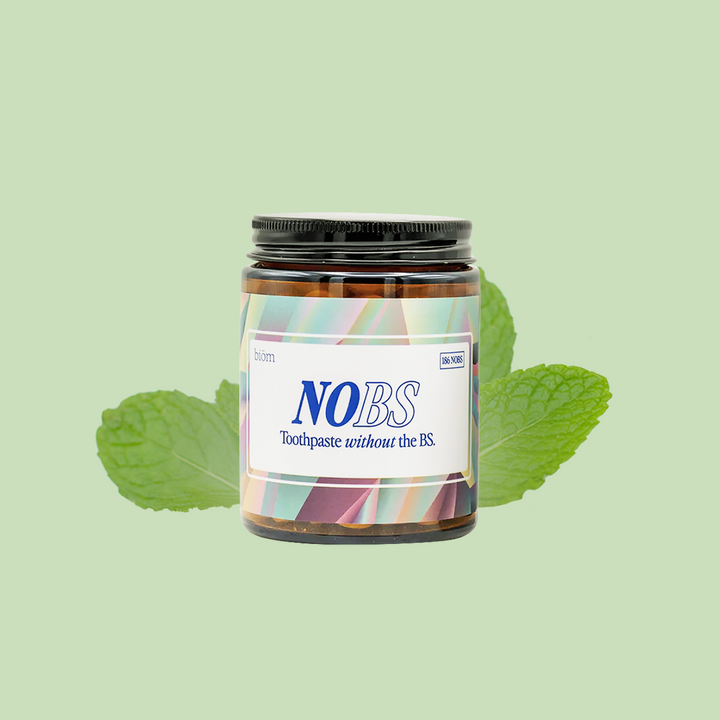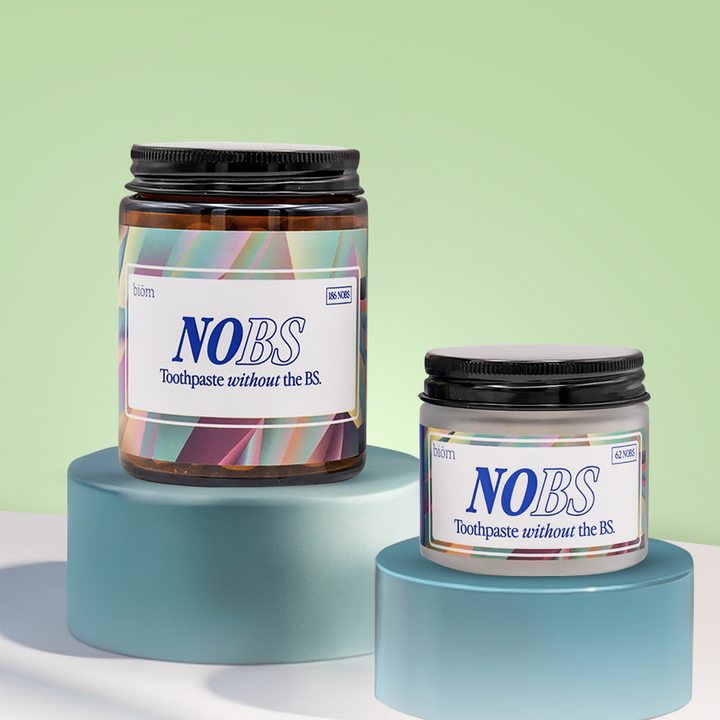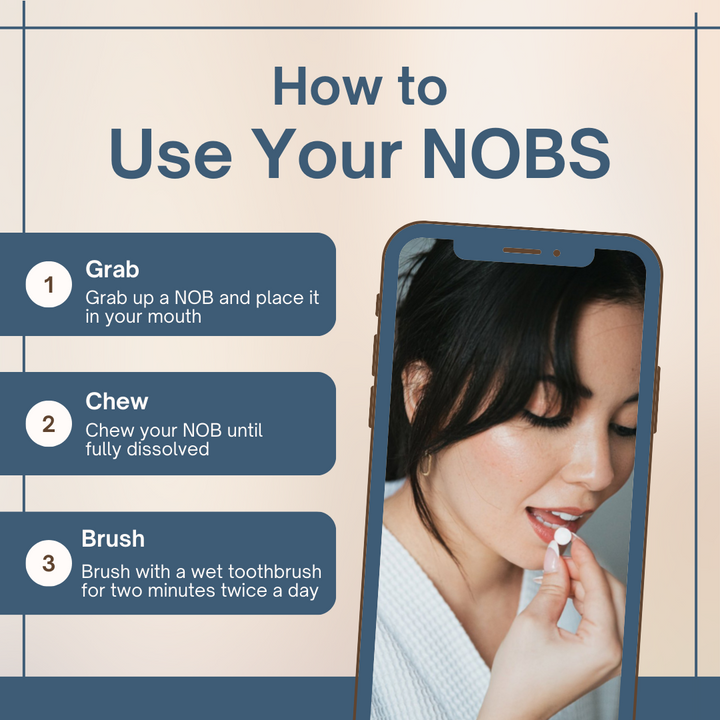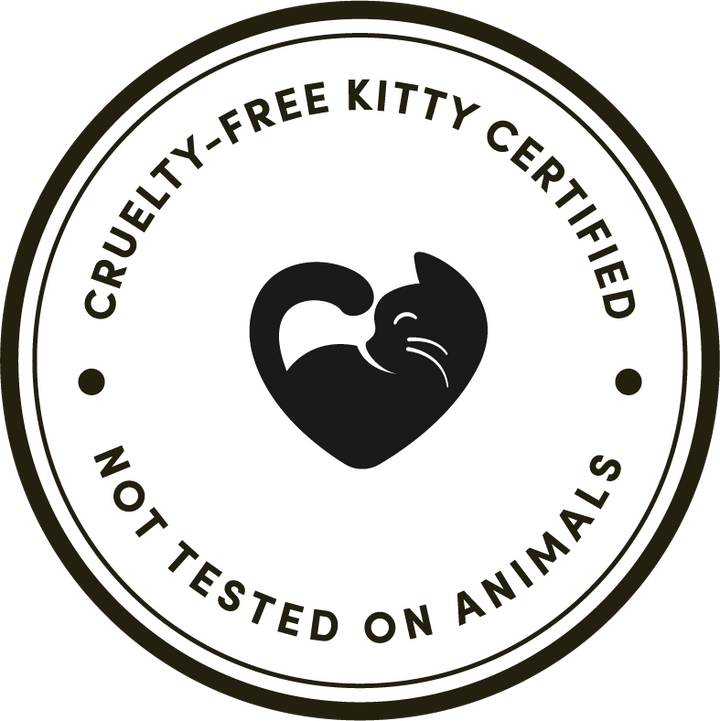Can I Take Toothpaste on a Plane?
Yes, you can take toothpaste on a plane in your check-in luggage or in your carry-on if it adheres to TSA’s regulations on how to carry liquids.
For carry-on luggage, travelers must follow the 3-1-1 rule for liquids, gels, and creams as well as use leakproof containers to ensure the safe transport of their products while traveling by air. To comply with these regulations, opting for travel sized toothpaste tablets is a practical solution.
However, toothpaste and any other liquid product are exempt from the restrictions when transported in checked baggage.
Keep reading to learn everything you need to know about the process of traveling with oral care essentials with ease.
What is the 3-1-1 liquids rule?
The 3-1-1 liquids rule, established by the TSA, limits the amount of liquids, gels, and aerosols you can bring in your carry-on luggage when flying.
Each container must be 3.4 ounces (100 milliliters) or less and fit into a single quart-sized, clear, resealable bag.
Passengers are allowed one such bag per person. Exceptions exist for medications and baby items, which can exceed the size limit if properly declared.
What are the TSA regulations for toiletries?

The TSA has specific regulations for toiletries, including liquids, gels, and aerosols, that passengers can carry on a plane.
These items must comply with the 3-1-1 rule, which means they must be in containers of less than or equal to 3.4oz/100 ml allowed and placed in a clear, plastic, quart-size bag.
Some exceptions to the 3-1-1 rule include medication, baby formula, and breast milk, which are allowed in larger quantities if they are necessary for the journey. Gel or liquid-filled teethers and canned or jarred baby food are also allowed in carry-on luggage.
Contrarily, toiletries such as toothpaste, shampoo, conditioner, mouthwash, and lotion are considered liquids and must follow the 3-1-1 rule.
Please note that solid toothpaste like toothpaste tablets and other bars and powder form toiletries are exempt from these restrictions. Feel free to throw them in your carry-on as you wish!
How does the 3-1-1 liquids rule work?
The 3-1-1 liquids rule, implemented by the Transportation Security Administration (TSA), governs the transportation of liquids, gels, and aerosols in carry-on luggage on airplanes.
According to this rule, each passenger is allowed to bring containers of gels, liquids, and aerosols that are 3.4 ounces (100 milliliters) or less per item. These containers must be placed in a single quart-sized, clear, plastic, zip-top bag.
Each passenger is permitted to carry one such bag, which must be presented separately at the security checkpoint for screening.
This rule aims to streamline the security screening process and mitigate potential security risks associated with liquids brought onto airplanes.
Therefore, it is essential to follow this rule carefully to ensure a smooth experience at the airport.
Why does the TSA put a limit on liquids?
The TSA implements limits on liquids for security reasons.
The restriction aims to mitigate potential threats posed by liquids, gels, and aerosols that could potentially be used to conceal explosives or other harmful materials.
By limiting the quantity of these substances that passengers can bring onto airplanes in carry-on luggage, the TSA seeks to enhance aviation security and reduce the risk of dangerous incidents.
Additionally, the restriction helps streamline the security screening process by reducing the volume of items that need to be inspected thoroughly.
While the limitation on liquids may inconvenience travelers to some extent, it is part of the TSA's broader efforts to ensure the safety and security of air travel.
Can I bring toothpaste on a plane?

Yes, you can typically bring a toothpaste tube on a plane, provided that the toothpaste tube is smaller than 3.4 ounces (100 milliliters) and fits within the quart-sized clear plastic bag required for liquids, complying with TSA regulations for carry-on items.
However, when bringing toothpaste in checked luggage, the restrictions are typically less stringent. You can usually pack larger containers of toothpaste without the limitations imposed on carry-on items.
Nonetheless, it’s always a good idea to securely package toiletries to prevent leaks or spills during transit.
How much toothpaste can I bring on a plane?
You can typically bring toothpaste on a plane in containers that are 3.4 ounces (100 milliliters) or less per item.
This is in accordance with the TSA's 3-1-1 liquids rule, which governs the amount of liquids, gels, and aerosols allowed in carry-on luggage.
All containers of toothpaste must fit within a single quart-sized, clear plastic, zip-top bag, which each passenger is allowed to carry through security.
It's important to adhere to these guidelines to ensure smooth passage through airport security checkpoints.
What happens if I bring too much toothpaste on a plane?
If you bring too much toothpaste on a plane, it may be confiscated by airport security during the screening process.
The TSA's 3-1-1 liquids rule limits the quantity of gels, liquids, and aerosols that passengers can bring in their carry-on luggage to containers of 3.4 ounces (100 milliliters) or less per item, all of which must fit into a single quart-sized, clear plastic, zip-top bag.
If you exceed this limit, security officers may ask you to either discard the excess toothpaste or place it in your checked luggage, if applicable.
In some cases, you may also face additional screening or delays at the security checkpoint. To avoid such issues, it's essential to familiarize yourself with the TSA's regulations and ensure that your toiletries comply with the specified guidelines before traveling.
On the other hand, it's best to bring travel-safe toothpaste tablets as they are not subject to the liquid restrictions imposed by the TSA.
What about prescription toothpaste?
There are certain exceptions to the TSA’s liquid rules for those who need to travel with prescription toothpaste and medically necessary liquids or breast milk.
To bring prescription toothpaste, ensure you have proper documentation and communicate with TSA agents, as these items are exceptions to the TSA’s 3-1-1 rule, allowing them to be carried in larger quantities than 3.4 fl. oz.
This includes prescription mouthwash, face wash, and other medically necessary liquids, which are permitted on a plane in accordance with the TSA exception rule.
Can you bring toothpaste in your carry-on luggage?

Yes, you can bring toothpaste in your carry-on luggage. However, there are restrictions on the amount and packaging.
Toothpaste in containers smaller than 3.4 ounces (100 milliliters) is generally allowed in carry-on luggage, as long as it fits within the quart-sized clear plastic bag required for liquids.
On the other hand, you can purchase toothpaste tablets, as they are more convenient and not subject to the same liquid restrictions as regular toothpaste tubes.
Can you pack toothpaste in your checked luggage?
Yes, you can pack toothpaste in your checked luggage.
Unlike carry-on luggage, checked baggage generally allows for larger containers of toothpaste without the limitations imposed by the TSA's 3-1-1 liquids rule.
However, it's essential to securely pack toiletries to prevent leaks or spills during transit.
Additionally, it's a good idea to check the specific guidelines of the airline you're traveling with to ensure compliance with their policies regarding toiletries in checked baggage.
How do I pack toothpaste on a plane?
When packing toothpaste for a plane journey, it’s essential to adhere to the TSA’s regulations for liquids and gels in carry-on luggage. Here’s how you can pack toothpaste for a flight:
-
Check the Size: Ensure that the toothpaste container is 3.4 ounces (100 milliliters) or less. Larger containers may not be allowed in carry-on luggage.
-
Use a Zip-Top Bag: Place the toothpaste container in a quart-sized, clear, plastic zip-top bag. This bag will need to be presented separately during the security screening process.
-
Seal the Bag Properly: Make sure the zip-top bag is securely closed to prevent any leakage during the flight.
-
Consider Solid Alternatives: If you’re concerned about liquid restrictions or potential leaks, consider using solid toothpaste alternatives such as toothpaste tablets. These usually don’t fall under liquid restrictions and can be packed in carry-on luggage without the need for a zip-top bag.
-
Review Airline Policies: Before traveling, check the specific guidelines of the airline you’re flying with to ensure compliance with their policies regarding toiletries in carry-on luggage.
To conveniently organize travel-sized toothpaste and other toiletries in accordance with TSA's 3-1-1 rule, consider using a toiletry bag.
By following these steps, you can pack toothpaste for your flight while adhering to the TSA’s regulations and ensuring a smooth journey through airport security.
What's the best way to travel with toothpaste?

When it comes to traveling with toothpaste, especially considering the restrictions on liquids in carry-on luggage, toothpaste tablets are your optimal choice.
Toothpaste tablets are solid alternatives to traditional toothpaste, conveniently packaged in tablet form.
These tablets are not subject to the TSA's liquid restrictions, making them perfect for air travel.
Simply pack the toothpaste tablets in a secure container, such as a pill organizer, or small resealable bag, and use them as needed by chewing them until they form a paste-like consistency for brushing.
Their compact and spill-proof nature makes them hassle-free for travel, ensuring you can maintain your oral hygiene routine without any worries about liquid leaks or exceeding carry-on restrictions.
Can I bring toothpaste tablets on a plane?
Yes, you can bring toothpaste tablets on a plane.
Toothpaste tablets are solid alternatives to traditional toothpaste and are not subject to the TSA's liquid restrictions for carry-on luggage.
They can be packed in your carry-on bag without the need for a quart-sized plastic bag or worrying about liquid limits.
Toothpaste tablets are good for travel and offer a convenient option for maintaining oral hygiene while flying.
Can I bring a face wash on a plane?

Yes, you can bring face wash under 3.4 fl. oz. in your carry-on bag on a plane. If it's over 3.4 oz., you'll have to put it in a checked bag.
In fact, the Transportation Security Administration (TSA) has set up clear guidelines for carrying face wash on a plane. According to these rules:
-
Face wash products in liquid, gel, foam, or cream form must adhere to the TSA’s 3.4 oz or 100 ml container size limit and be packed in a quart-sized clear plastic bag.
-
Solid face wash bars and powdered face wash are exempt from these restrictions.
-
And, in checked luggage, there are no limitations on the form or quantity of face wash that can be transported.
In short, face wash can be transported on an airplane in both checked and carry-on baggage with proper rules and guidelines.
Can I bring mouthwash on a plane?

Yes, you can definitely bring mouthwash on a plane.
However, mouthwash is considered a liquid and is subject to the TSA's 3-1-1 liquids rule for carry-on luggage. This means that each container of mouthwash must be 3.4 ounces (100 milliliters) or less and all containers must fit into a single quart-sized clear plastic bag.
Conversely, you can bring a larger quantity of mouthwash in your checked luggage. It typically has fewer restrictions on liquids, allowing you to bring larger containers without the need to adhere to the 3-1-1 rule.
So, if you prefer to have more of your favorite mouthwash with you while traveling, simply pack it in your checked baggage and enjoy your trip worry-free. Just ensure that the bottle is tightly sealed to prevent any leaks or spills during transit.
Can I bring dental floss on a plane?
Yes, you can bring dental floss on a plane. Dental floss is not subject to the TSA's 3-1-1 liquids rule or any specific restrictions for carry-on luggage.
You can pack dental floss in your carry-on bag without worrying about size limits or packaging requirements.
However, it's always a good idea to ensure that your dental floss is securely packed to prevent it from tangling or becoming a nuisance during your journey.
All in all, when it comes to traveling with oral care essentials like toothpaste, mouthwash, and dental floss, it's important to understand and comply with the TSA regulations to ensure a smooth journey.
Frequently Asked Questions
Can you bring full size toothpaste on a plane?
No, you cannot typically bring full-size toothpaste on a plane in your carry-on luggage. The TSA's 3-1-1 liquids rule restricts the size of containers for liquids, gels, and aerosols to 3.4 ounces (100 milliliters) or less per item. Full-size toothpaste tubes usually exceed this limit and are not allowed in carry-on bags. However, you can pack full-size toothpaste in your checked luggage, where there are usually no restrictions on the size of toiletry containers. It's advisable to check the specific guidelines of the airline you're flying with and the airport security regulations to ensure compliance with their policies regarding toiletries.
What is not allowed in a carry-on bag?
Several items are typically prohibited in carry-on bags for security reasons. These include sharp objects like knives and scissors, as well as liquids exceeding 3.4 ounces due to the TSA's 3-1-1 liquids rule. Hazardous materials such as flammable liquids and explosives are also banned, along with sporting goods, tools, firearms, and weapons. It's important for travelers to familiarize themselves with these restrictions and review the specific guidelines of their airline and destination to ensure compliance and a smooth travel experience.
What are the TSA rules for toiletries?
The TSA has specific rules for toiletries when it comes to carry-on luggage. The main rule is the 3-1-1 liquids rule, which restricts liquids, gels, and aerosols to containers of 3.4 ounces (100 milliliters) or less per item. These items must be placed in a quart-sized, clear, plastic zip-top bag, with each passenger allowed one bag for screening at security checkpoints. Exceptions include medications, baby formula, and breast milk, which may be permitted in larger quantities but could require additional screening. Solid toiletries, like bar soap or solid deodorant, are typically not subject to the 3-1-1 rule and can be packed without restrictions.
Can I pack a razor in my carry-on?
Yes, you can typically pack a razor in your carry-on luggage. However, it's essential to ensure that the razor does not have any removable blades. Disposable razors and cartridge razors with blades encased in the cartridge are generally permitted. Straight razors or safety razors with removable blades are not allowed in carry-on bags but can be packed in checked luggage. It's always a good idea to double-check the specific guidelines of the airline you're flying with and the airport security regulations to ensure compliance.
How many 3 oz. bottles can I carry on?
You can typically carry multiple 3-ounce bottles in your carry-on luggage, as long as they all fit within the quart-sized, clear plastic bag required for liquids. According to the TSA's 3-1-1 liquids rule, each passenger is allowed one quart-sized bag containing containers of gels, liquids, and aerosols that are 3.4 ounces (100 milliliters) or less per item. As long as your 3-ounce bottles fit comfortably within this quart-sized bag and the total volume of liquids does not exceed the bag's capacity, you can bring multiple 3-ounce bottles in your carry-on.
What to do if the TSA is not following their rules?
If you believe TSA agents are not following their rules, first, remain calm and ask for clarification from the officer. If your concerns are not addressed, request to speak with a supervisor. Document the incident with details such as names and badge numbers. Finally, file a complaint through the TSA's website or customer service to ensure your concerns are officially recorded.
Is toothpaste allowed on airplanes?
Yes, toothpaste is allowed on airplanes but must follow the TSA’s liquid rules for carry-on luggage. Toothpaste in containers of 100ml (3.4 ounces) or less can be brought in hand luggage, while larger sizes must go in checked baggage. For convenience and compliance, toothpaste tablets are a great alternative to traditional toothpaste.
Can you take 100ml toothpaste in hand luggage?
Yes, you can carry 100ml toothpaste in your hand luggage, as it adheres to the TSA liquid limit for carry-on items. Make sure it fits within your quart-sized, clear Ziploc bag along with other liquids. To avoid these restrictions altogether, consider packing toothpaste tablets instead.
Does toothpaste have to be in a Ziploc bag?
Yes, liquid or gel toothpaste must be placed in a quart-sized, clear Ziploc bag with other liquids and gels when carried in hand luggage. This makes it easier to clear security checks. However, toothpaste tablets are not considered liquids and can be packed freely without requiring a Ziploc bag.
What other oral things can you bring on a plane?
You can bring toothbrushes, floss, mouthwash (in 100ml containers for carry-on), and even electric toothbrushes with batteries. These items are all TSA-approved for travel. For ultimate convenience and to bypass liquid restrictions, it’s best to bring toothpaste tablets, which are travel-friendly and hassle-free.
Can you take 100ml toothpaste on a plane?
Yes, you can take a 100ml (3.4 oz) tube of toothpaste in your carry-on bag, as it complies with the TSA liquids rule. It must be placed in a quart-sized, clear plastic bag along with other liquids, gels, and creams.
Can I bring 6 oz toothpaste in my carry-on?
No, a 6 oz toothpaste tube exceeds the 3.4 oz (100ml) limit for liquids in carry-on luggage and must be packed in your checked baggage instead.
How much toothpaste can you bring on a plane?
You can bring up to 3.4 oz (100ml) of toothpaste in your carry-on, provided it fits in your quart-sized bag for liquids. Larger tubes must go in checked luggage.


